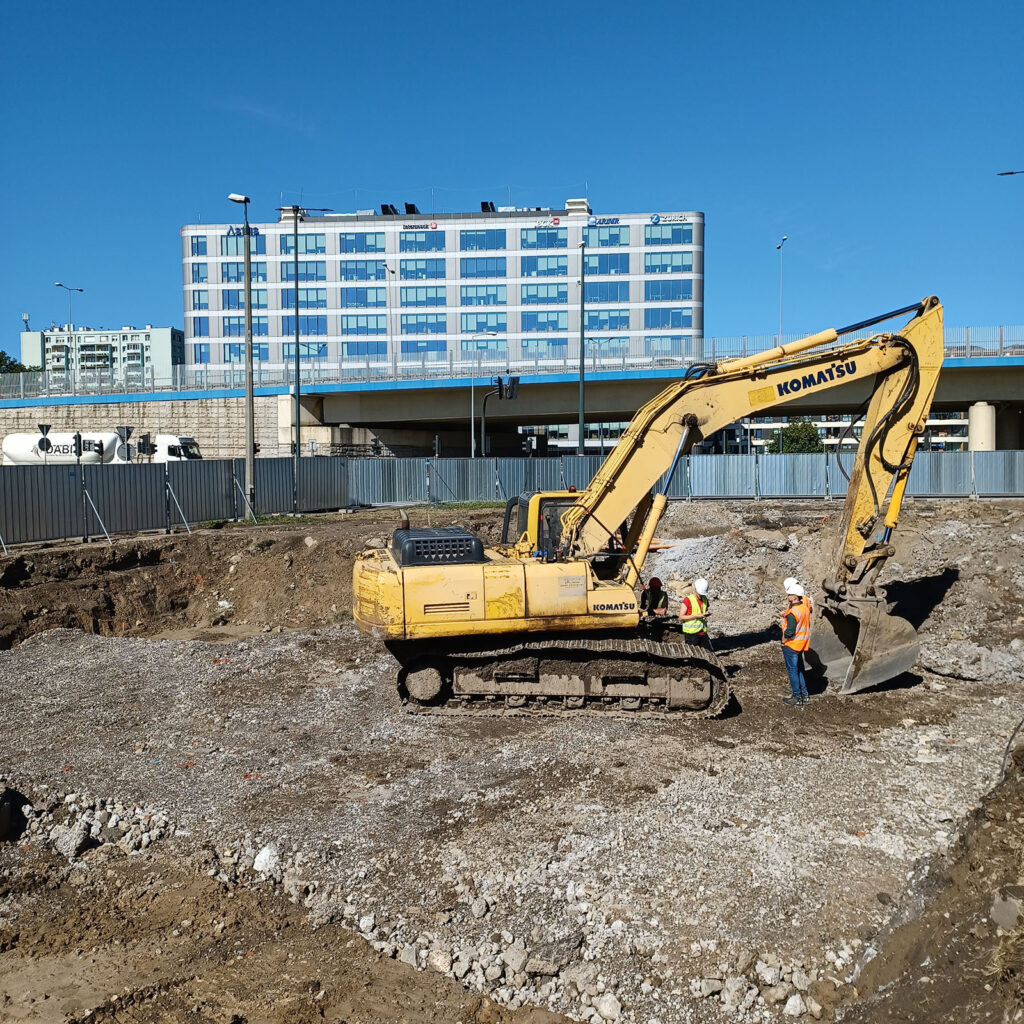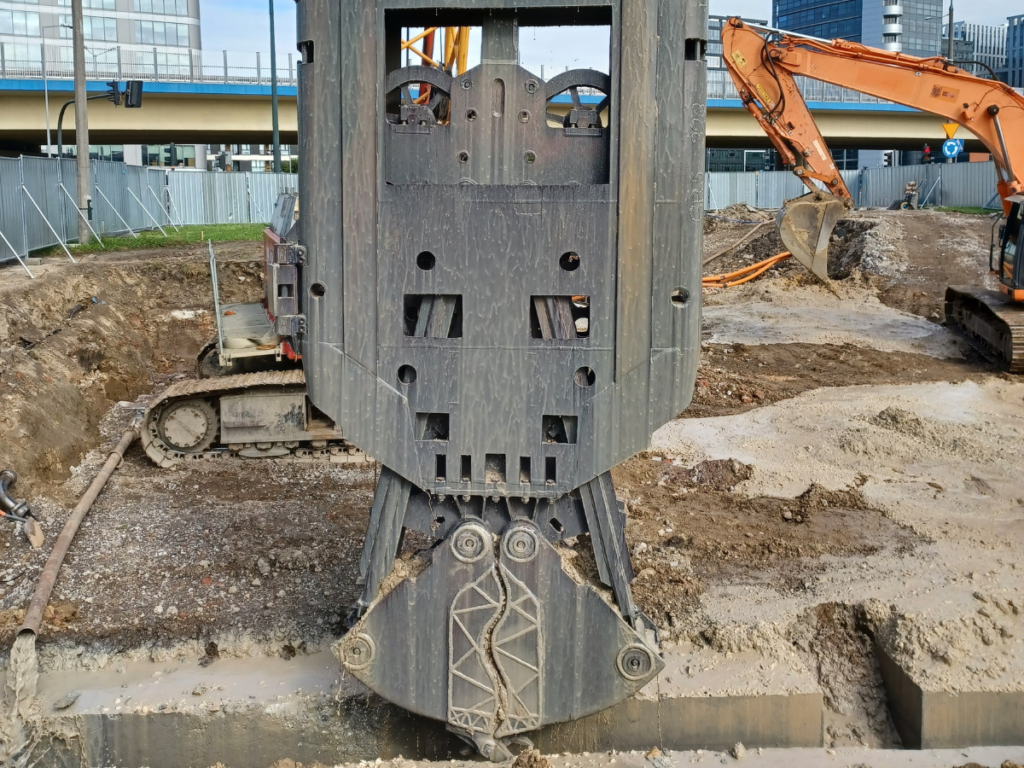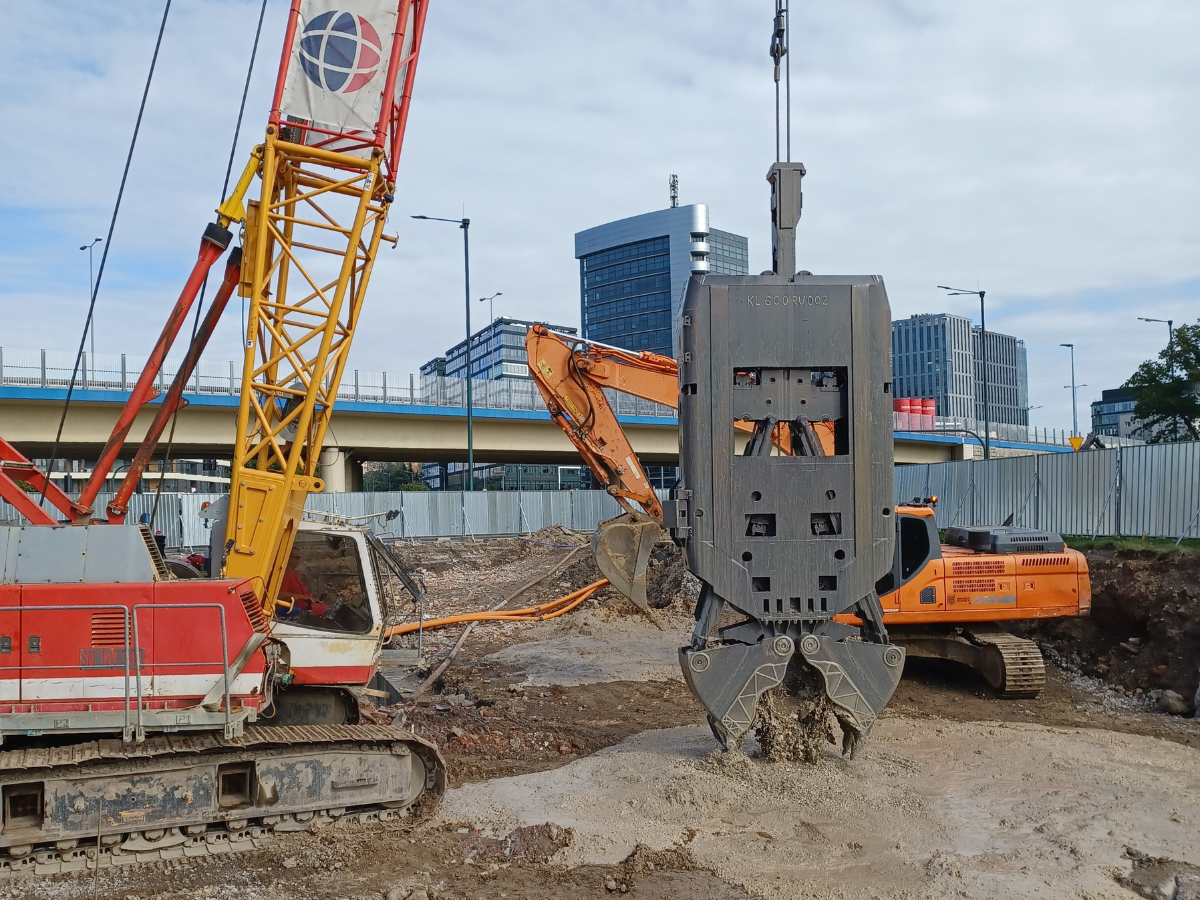Site preparation is slowly coming to an end. In mid-September, work began on the construction of the underground Polsad Roundabout stop, and at the beginning of this week we started sinking the diaphragm walls. What exactly are we doing at this stage and how is the excavation being carried out?
In the vicinity of the Iżyckiego Flyover, in the green belt dividing the roadways on Młyńska Street, the first stage of work on the construction of an underground stop has begun. The contractor first carried out control digs to precisely locate underground networks. In mid-September, work platforms were erected, i.e. sturdy structures that allow geotechnical and structural work related to the underground part of the Polsad stop. They have to withstand the demands of heavy equipment, including a powerful slurry wall sinking machine that weighs about 100 tons.
At the beginning of this week, we started the main part of the geotechnical work: it includes sinking and creating the station’s diaphragm walls.
Slurry walls are reinforced concrete structures that enclose the tunnel, minimize the impact of the excavation on buildings in the vicinity of the structure and take the pressure of the soil and groundwater. They are formed by concreting an excavation made by a deepening machine. The excavation will extend more than 20 meters into the ground.
High silos containing bentonite have also appeared directly next to the flyover. The bentonite slurry supports the walls of the open slots as they are excavated and reinforcement baskets are installed, until the slots are filled with concrete mix. Crack walls are concreted from the bottom of the excavation to the top. Once such walls are completed, construction of the floor, the structural top slab of the tunnel, can proceed.
The process of erecting one diaphragm wall takes an average of 24 hours, and the most strenuous work – i.e. the sinking of the diaphragm walls – is done during the day. Depending on the section and the planned depth, the work may be prolonged. It is important that the work must be carried out continuously, due to the technological process. The result of interrupted concreting can be the formation of permanent defects in the structure and the inability to ensure high quality work. Any defects created in this element of the structure directly affect the duration of construction, and thus the duration of the construction impact on the environment.




